- Home
- Janet Dailey
Silver Wings, Santiago Blue
Silver Wings, Santiago Blue Read online
Meet the courageous women of
SILVER WINGS, SANTIAGO BLUE
Janet Dailey’s exhilarating bestseller
of the unbreakable bonds of friendship and
family forged against the daunting
backdrop of World War II
Cappy Hayward: An Army brat torn between love and hate for military life, she savored the freedom and power of flying, and fought an ever-growing attraction to a career Army man.
Marty Rogers: A working-class girl whose flying expertise was her ticket to glory, she longed for a chance to outshine her brother and win her parents’ love.
Mary Lynn Palmer: A Southern belle with a husband flying overseas, her soft-voiced manners contrasted with her steely courage in the skies.
Eden Van Valkenburg: A New York socialite looking for wartime excitement, she discovered a love that even beauty, glamour, and money couldn’t buy.
“Silver Wings, Santiago Blue lifts Janet Dailey into new
areas [of] her writing career…. Vividly
characterized … packed with action … a tale
of women’s romance with flying.”
—Houston Chronicle
“[A] tale of love and war and Romance—
with a capital R!”
—St. Louis Post-Dispatch
More acclaim for
SILVER WINGS, SANTIAGO BLUE
A Doubleday Book Club Main Selection
A Literary Guild Alternate Selection
“A superb tribute to [Janet Dailey’s] talent. … The subject matter is highly unique and she deals with it beautifully. Her ability to stamp a character in the reader’s mind is deftly shown here, for I found her women brave, passionate, and extremely real.”
—Affaire de Coeur
“Intriguingly researched … zesty … solidly entertaining.”
—Kirkus Reviews
“It churns busily and animatedly and will sweep along admiring readers of its bestselling author.”
—Publishers Weekly
THE GLORY GAME
“Glamorous, fast-moving. … [Raul is] the quintessential Latin lover.”
—Chicago Sun-Times
“The Dailey magic is evident. …”
—Los Angeles Herald Examiner
Praise for the storytelling talents
of bestselling author
JANET DAILEY
“[Dailey] moves her story ahead so purposefully and dramatically … readers will be glad they’ve gone along for the ride.”
—Chicago Sun-Times
“A page-turner.”
—Publishers Weekly
“Bittersweet. … Passion, vengeance, and an unexpected danger from the past add to the mix.”
—Library Journal
“Janet Dailey’s name is synonymous with romance.”
—Tulsa World (OK)
“Careful writing and brilliant characterizations create an engrossing read.”
—Booklist
“A master storyteller of romantic tales, Dailey weaves all the ‘musts’ together to create the perfect love story.”
— Leisure magazine
“Dailey is a smooth, experienced romance writer.”
—Arizona Daily Star
Books by Janet Daily
Calder Born, Calder Bred
Stands a Calder Man
This Calder Range
This Calder Sky
The Best Way to Lose
Touch The Wind
The Glory Game
The Pride of Hannah Wade
Silver Wings, Santiago Blue
For the Love of God
Foxfire Light
The Hostage Bride
The Lancaster Men
Leftover Love
Mistletoe & Holly
The Second Time
Separate Cabins
Terms of Surrender
Western Man
Nightway
Ride the Thunder
The Rogue
This book is a work of fiction. Names, characters, places and incidents are products of the author’s imagination or are used fictitiously. Any resemblance to actual events or locales or persons, living or dead, is entirely coincidental.
A Pocket Star Book published by
POCKET BOOKS, a division of Simon & Schuster, Inc.
1230 Avenue of the Americas, New York, NY 10020
www.SimonandSchuster.com
Copyright © 1984 by Janet Dailey
Cover illustration by Mark Gerber
All rights reserved, including the right to reproduce
this book or portions thereof in any form whatsoever.
For information address Pocket Books, 1230
Avenue of the Americas, New York, NY 10020
ISBN 13: 978-0-671-87515-2
ISBN 10: 0-671-87515-9
eISBN-13: 978-1-43914-004-8
First Pocket Books paperback printing July 1985
23 22 21 20 19 18 17 16 15 14
POCKET STAR BOOKS and colophon are registered
trademarks of Simon & Schuster, Inc.
Manufactured in the United States of America
To Jerry, my flight instructor back in 1968 when I earned my private pilot’s license,
and to Frank, the F.A.A. pilot who gave me my “up check,”
and to Bill, my husband, manager, friend, and lover, but more important in this case, the man who showed me the skies and encouraged me to fly in them myself. Now I know what it’s like to be high above the earth, rocking a plane and singing at the top of your lungs from the sheer joy of solo flight.
* * *
With special thanks to former WASP
Harriett “Tuffy” Kenyan Call, for her
memories and mementos of those years.
Author’s Note
The parodies of song lyrics appearing on the pages delineating the Parts of this book are the actual songs the Women Airforce Service Pilots (WASPs) sang while they marched to and from the flight line, their classes, and their barracks. In their own way, the songs tell much of the girls’ story.
HIGH FLIGHT
Oh! I have slipped the surly bonds of earth,
and danced the skies on laughter-silvered wings;
Sunward I’ve climbed and joined the tumbling mirth
of sunsplit clouds—and done a hundred things
You have not dreamed of—wheeled and soared and swung—high in the sunlit silence.
Hov’ring there, I’ve chased the shouting winds along, and flung my eager craft through footless halls of air.
Up, up the long, delirious, burning blue, I’ve topped the windswept heights with easy grace,
Where never lark or even eagle flew.
And, while with silent, lifting mind I’ve trod
the high untrespassed sanctity of space,
Put out my hand, and touched the face of God.
John Gillespie Magee, Jr.
* * *
In December 1941, Pilot Officer Magee, a nineteen-year-old American serving with the Royal Canadian Air Force in England, was killed when his Spitfire collided with another airplane inside a cloud. Discovered among his personal effects was this sonnet, written on the back of a letter at the time he was in flying school at Farnborough, England.
* * *
Prologue
SHE SAT AMIDST a framework of canvas and piano wire, her long skirts tied around her knees and her legs extended full length in front of her. No doubt her thudding heart competed with the reverberations of the 30-horsepower motor spinning the two propellers. When the wire anchoring the Wright Brothers flying machine to a rock was unfastened, the Flyer was launched five stories into the air, and in that wildly exhilarating moment Edit
h Berg nearly forgot to hold on to her seat.
Beside her Wilbur Wright was at the controls, dressed in his customary high starched collar, gray suit and an automobile touring cap. The flight over the Hunaudières race track in Le Mans, France, lasted two minutes, three seconds, and Edith Berg entered the pages of aviation history as the first woman to ride in a flying machine. It was all a publicity stunt to promote the reliability of the new Wright Flyer, an idea concocted by her husband, Hart O. Berg, a sales representative for the Wright Brothers.
The year was 1908 and Edith Berg was an instant sensation, her courage and daring applauded. The press loved the stunt. The French shook their heads and whispered among themselves, “That crazy American woman! And imagine her husband’s letting her do it!”
She wore a stunning flying suit of plum-colored satin, from the hood covering her raven hair to her knickers and the cloth leggings, called puttees, which wrapped her legs from knee to ankle. It was understandable that the all-male members at the Aero Club of America’s headquarters on Long Island would look at twenty-seven-year-old Harriet Quimby with open mouths, especially when she asked to be licensed as an aeronaut—a woman! (The government had not gotten around to accepting responsibility for licensing pilots and wouldn’t until 1925.)
The green-eyed writer for Leslie’s Magazine suggested the members let her demonstrate her flying skills. With considerable skepticism they watched Harriet Quimby climb into her gossamer biplane and take off. She flew over a nearby potato field, then banked the plane back to the field and set her aircraft down within eight feet of her takeoff point—setting a new record for the club in landing accuracy.
The date was August 1, 1911, and Harriet Quimby became the first woman to be licensed as an aeronaut. In a wry comment to reporters she said, “Flying seems easier than voting.” Not until 1920 would the Nineteenth Amendment be ratified, giving women the right to vote.
She sat cross-legged in the doorway of the fuselage while the flame-red, tri-motored Fokker airplane with gold wings, the Friendship, floated on its pontoons in the harbor off Burry Port, Wales. Her short-cropped hair was the color of the dune grass on Kill Devil Hill, site of the Wright Brothers’ first powered flight.
Captain Hilton Railey rowed alongside the Friendship and shouted to her, “How does it feel to be the first woman to fly the Atlantic? Aren’t you excited?”
“It was a grand experience,” Amelia Earhart replied, but she knew she hadn’t flown the Atlantic. Bill Stultz had been the pilot and navigator on the flight. “I was just baggage. Someday I’ll try it alone.”
That was June 18, 1928.
Four years later, on May 21, 1932, Amelia Earhart landed her red 500-horsepower Lockheed Vega in a farm meadow outside of Londonderry, Ireland. Exhausted, she crawled out of the cockpit and said to the staring farmhand, “I’ve come from America.” It was five years after Lindbergh had made his Atlantic crossing.
On January 12, 1935, Amelia Earhart accomplished another first in aviation history by becoming the first pilot, male or female, to successfully fly from Hawaii to the continental United States, landing her Vega at Oakland Airport in California. That feat was immediately followed by the first non-stop flight to Mexico City, then from Mexico City to New York.
As a women’s career counselor at Purdue University in Indiana, Amelia Earhart advised a group of female students, “A girl must nowadays believe completely in herself as an individual. She must realize at the outset that a woman must do the same job better than a man to get as much credit for it. She must be aware of the various discriminations, both legal and traditional, against women in the business world.”
Amelia had already encountered them in 1929 when Transcontinental Air Transport, later to become Trans World Airlines, asked her to become a consultant for them along with Lindbergh. While he flew around the country checking out new air routes, she traveled as a passenger, talking with women and lecturing various women’s clubs on the safety and enjoyment of flying.
At the Bendix Transcontinental Air Race in May of 1935, Amelia Earhart had the chance to meet newcomer Jacqueline Cochran, whose story would rival any tale by Dickens. As an orphan, her birth date and parents unknown, she was raised by foster parents in the lumber towns of northern Florida. It was a hardscrabble existence, and little Jacqueline often went shoeless. When she was eight years old, her foster family moved to Columbus, Georgia, to work in the local cotton mills, and Jackie worked, too, on the twelve-hour night shift. A year later, she had charge of fifteen children in the fabric inspection room.
She left the cotton mill to go to work for the owner of a beauty shop, doing odd jobs. A beauty operator at the age of thirteen, Jackie was one of the first to learn the technique of giving a permanent wave. She began traveling to demonstrate the technique in salons through Alabama and Florida, until a customer persuaded her to go to a nursing school even though she only had two years of formal education.
As a nurse, she worked for a country doctor in Bonifay, Florida, a lumber town, so much like the places where she’d been raised. A short time later, after delivering a baby under wretched conditions, she abandoned her nursing career and went back to the beauty business. She became a stylist for Antoine’s at Saks Fifth Avenue, both in his New York and Miami salons. In 1932, at a Miami club, Jacqueline Cochran met Floyd Bostwick Odium, a millionaire and a Wall Street financier. She told him of her dream to start her own cosmetics company. Odium advised her that to get ahead of her competition and to cover the kind of necessary territory she would need wings. Jackie used her vacation that year to obtain a pilot’s license, and subsequently the equivalent of a U.S. Navy flight training course.
At the same time that Jacqueline Cochran Cosmetics, Incorporated, was born with Odium’s help, Jacqueline Cochran aviatrix came into existence. In 1934, this striking brown-eyed blonde made her debut in air-racing circles with the England-Australia competition. Engine troubles forced her to land in Bucharest, Rumania.
In the Bendix Transcontinental Air Race of 1935 which saw both Earhart and Cochran competing, Earhart took off in the middle of the night with the rest of the starters. Cochran’s Northrop Gamma was next on the ramp for takeoff, when a heavy fog rolled over the Los Angeles airport. The plane ahead of her roared down the runway and disappeared into the thick mist. The sound of a distant explosion was immediately followed by an eerie light that backlit the fog. Her reaction was instinctive, her nurse’s training taking over. Jackie jumped in her car and followed the fire truck down the runway. Both arrived too late to do the pilot any good. By the time the fire was put out, the pilot was dead.
Jackie stood beside her aircraft while the tow truck dragged the burned and twisted wreckage off the runway. The fatal crash left everyone a little stunned, including her. A government aviation official was standing not far away from her and she heard him say he thought it was suicide to take off in that fog. The realization that she was next in line sent her running behind the hangar so no one would see her when she vomited.
When her legs quit shaking, she placed a long-distance call to New York and talked to her ardent backer and now her fiancé as well, Floyd Odium. “What should I do?”
But Odium couldn’t tell her, ultimately advising her that it came down to “a philosophy of life.” At three o’clock that morning, Jacqueline Cochran made a blind takeoff, her fuel-heavy aircraft barely clearing the outer fence which ripped off the radio antenna hanging below the plane’s belly. She spiraled up through the fog, flying by compass only, to gain altitude to clear the seven-thousand-foot mountains inland from the coast.
Amelia Earhart came in fifth in the race, but an overheated engine and dangerous vibrations in the tail of the Northrop Gamma forced Jackie back to the starting line at Los Angeles.
May 10, 1936, was the wedding day for the slim-built, sandy-haired Floyd Odium and the glamorous and gutsy blonde Jacqueline Cochran. The homes she’d never had as a child became a reality as they purchased an estate in Connecticut, a ranch
near Palm Springs, and an apartment in Manhattan overlooking the East River. Aviation had long been a love of Odium’s, so his interest went beyond being merely a supporter of his wife’s career. Among his many holdings were the Curtiss-Wright Corporation and the Convair Aircraft Company. So it wasn’t surprising that the Odiums helped finance Amelia Earhart’s around-the-world flight.
On June 1, 1937, they were in Miami to see her off on that last, fateful trip. Before she left, Amelia gave Jacqueline a small American flag made of silk—which became a symbolic “transfer of the flag,” in military jargon, when Amelia Earhart vanished without a trace. Speaking at a tribute to the famous woman aviator, Jacqueline said, “If her last flight was into eternity, one can mourn her loss but not regret her effort. Amelia did not lose, for her last flight was endless. In a relay race of progress, she had merely placed the torch in the hands of others to carry on to the next goal and from there on and on forever.”
That year, Jacqueline Cochran won the women’s purse in the Bendix Air Race and finished third overall. On December 4, 1937, she set a national speed record, traveling from New York to Miami in four hours and twelve minutes, bettering the previous time set by the millionaire race pilot Howard Hughes. The following year, Jacqueline Cochran won the Bendix Race, covering the distance of 2,042 miles in eight hours, ten minutes and thirty-one seconds—nonstop! Her plane was the P-35, a sleek, low-winged military pursuit-type aircraft. She set a new cross-country record for women, and in 1939 broke the women’s altitude record. She received her second Harmon Trophy, the highest award given to any aviator in America, presented to her in June by the First Lady, Eleanor Roosevelt. She kept flying, setting records, and testing new designs and new equipment.
But events in Europe were dominating the world scene. The Axis held control over Czechoslovakia, Albania, and Spain. In September, Hitler sent his German Panzers into Poland. On the 28th of September, the day after Warsaw fell, Jacqueline Cochran sent a letter to Eleanor Roosevelt, expressing her view that it was time to consider the idea of women pilots in non-combat roles and implying a willingness to do the advance planning for such an organization. Beyond expressing gratitude for the suggestion and stating her belief that women could make many contributions to the war effort should they be called upon to do so, there was little Eleanor Roosevelt could do.

 Hart's Hollow Farm
Hart's Hollow Farm Holding Out for Christmas
Holding Out for Christmas It's a Christmas Thing
It's a Christmas Thing Texas Forever
Texas Forever Calder Born, Calder Bred
Calder Born, Calder Bred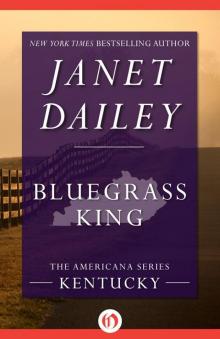 Bluegrass King (The Americana Series Book 17)
Bluegrass King (The Americana Series Book 17) One of the Boys
One of the Boys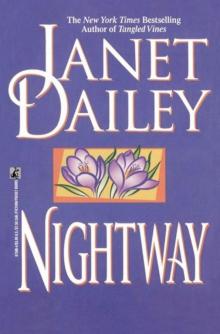 Nightway
Nightway This Calder Sky
This Calder Sky Christmas in Cowboy Country
Christmas in Cowboy Country The Widow and the Wastrel
The Widow and the Wastrel Separate Cabins
Separate Cabins Darling Jenny
Darling Jenny With a Little Luck
With a Little Luck The Thawing of Mara
The Thawing of Mara The Homeplace (The Americana Series Book 15)
The Homeplace (The Americana Series Book 15)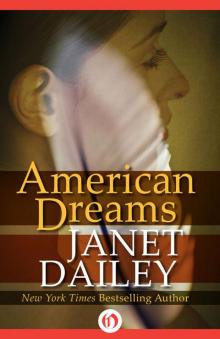 American Dreams
American Dreams Merry Christmas, Cowboy
Merry Christmas, Cowboy Lord of the High Lonesome
Lord of the High Lonesome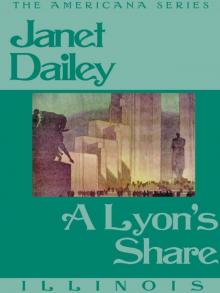 A Lyon's Share
A Lyon's Share After the Storm
After the Storm Masquerade
Masquerade Long, Tall Christmas
Long, Tall Christmas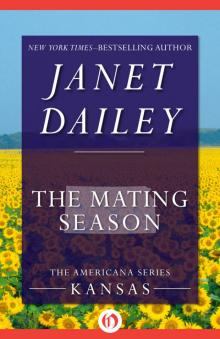 The Mating Season
The Mating Season To Tell the Truth
To Tell the Truth A Land Called Deseret
A Land Called Deseret Ride the Thunder
Ride the Thunder That Boston Man
That Boston Man Wild and Wonderful
Wild and Wonderful Sonora Sundown: Arizona (The Americana Series Book 3)
Sonora Sundown: Arizona (The Americana Series Book 3) Texas Tall
Texas Tall Giant of Mesabi
Giant of Mesabi The Bride of the Delta Queen
The Bride of the Delta Queen Wildcatter's Woman
Wildcatter's Woman Difficult Decision
Difficult Decision The Indy Man
The Indy Man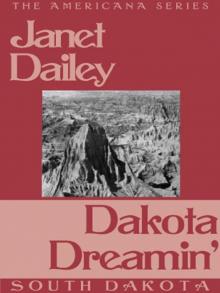 Dakota Dreamin'
Dakota Dreamin' Kona Winds
Kona Winds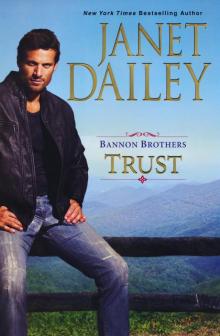 Bannon Brothers
Bannon Brothers The Lancaster Men
The Lancaster Men janet dailey- the healing touch
janet dailey- the healing touch Strange Bedfellow
Strange Bedfellow Leftover Love
Leftover Love Big Sky Country
Big Sky Country My Kind of Christmas
My Kind of Christmas You're Still The One
You're Still The One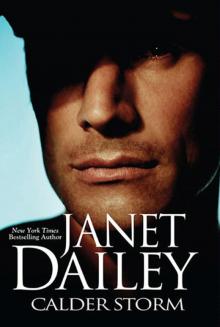 Calder Storm
Calder Storm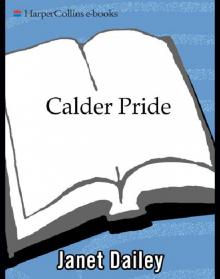 Calder Pride
Calder Pride Low Country Liar
Low Country Liar Texas Tough
Texas Tough Foxfire Light
Foxfire Light With a Little Luck (The Americana Series Book 49)
With a Little Luck (The Americana Series Book 49) Texas Fierce
Texas Fierce Sentimental Journey
Sentimental Journey The Pride of Hannah Wade
The Pride of Hannah Wade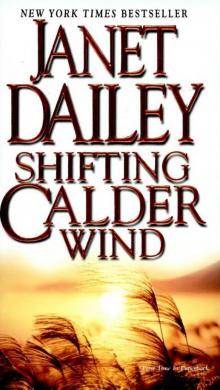 Shifting Calder Wind
Shifting Calder Wind Santa In Montana
Santa In Montana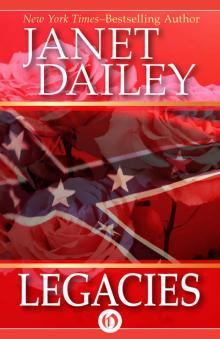 Legacies
Legacies Land of Enchantment
Land of Enchantment That Carolina Summer (North Carolina)
That Carolina Summer (North Carolina) Reilly's Woman
Reilly's Woman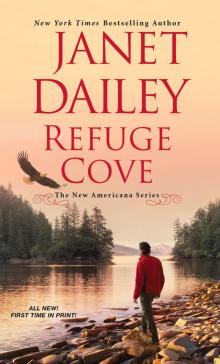 Refuge Cove
Refuge Cove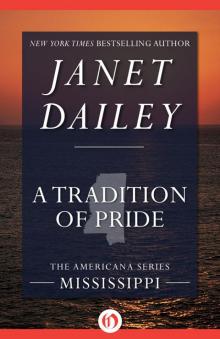 A Tradition of Pride
A Tradition of Pride Bed of Grass
Bed of Grass To Santa With Love
To Santa With Love Dangerous Masquerade
Dangerous Masquerade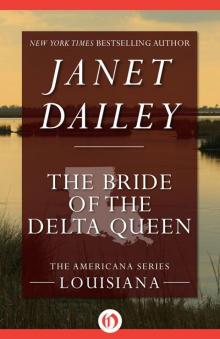 The Bride of the Delta Queen (The Americana Series Book 18)
The Bride of the Delta Queen (The Americana Series Book 18) Six White Horses
Six White Horses Valley of the Vapours (The Americana Series Book 4)
Valley of the Vapours (The Americana Series Book 4) Bed of Grass (The Americana Series Book 20)
Bed of Grass (The Americana Series Book 20) The Indy Man (The Americana Series Book 14)
The Indy Man (The Americana Series Book 14) After the Storm (The Americana Series Book 6)
After the Storm (The Americana Series Book 6) Heiress
Heiress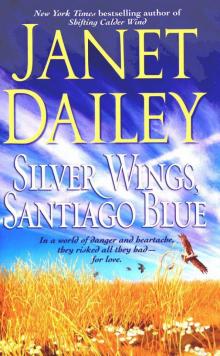 Silver Wings, Santiago Blue
Silver Wings, Santiago Blue The Rogue
The Rogue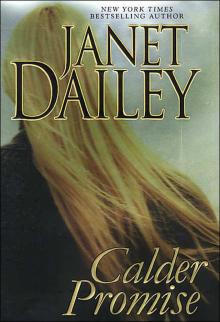 Calder Promise
Calder Promise Texas True
Texas True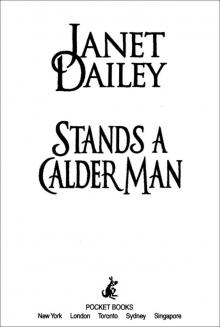 Stands a Calder Man
Stands a Calder Man Fiesta San Antonio
Fiesta San Antonio Fire and Ice
Fire and Ice For the Love of God
For the Love of God The Ivory Cane
The Ivory Cane Northern Magic
Northern Magic The Glory Game
The Glory Game The Homeplace
The Homeplace The Great Alone
The Great Alone Summer Mahogany
Summer Mahogany Tangled Vines
Tangled Vines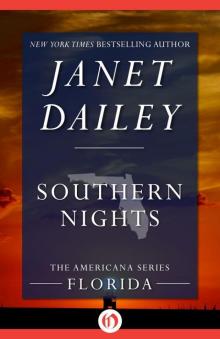 Southern Nights: Florida (The Americana Series Book 9)
Southern Nights: Florida (The Americana Series Book 9)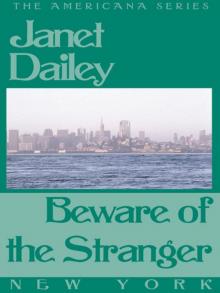 Beware of the Stranger
Beware of the Stranger Big Sky Country: Montana (The Americana Series Book 26)
Big Sky Country: Montana (The Americana Series Book 26)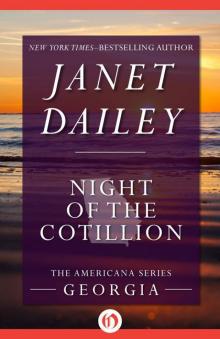 Night of the Cotillion: Georgia (The Americana Series Book 10)
Night of the Cotillion: Georgia (The Americana Series Book 10) Green Mountain Man
Green Mountain Man For Mike's Sake
For Mike's Sake Enemy in Camp (The Americana Series Book 22)
Enemy in Camp (The Americana Series Book 22) Something More
Something More Rivals
Rivals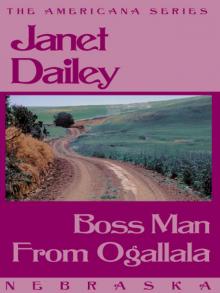 Boss Man from Ogallala
Boss Man from Ogallala Just a Little Christmas
Just a Little Christmas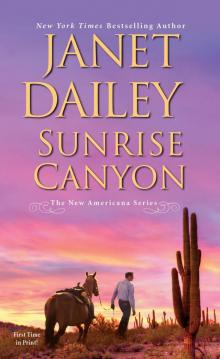 Sunrise Canyon
Sunrise Canyon One of the Boys (New Jersey)
One of the Boys (New Jersey)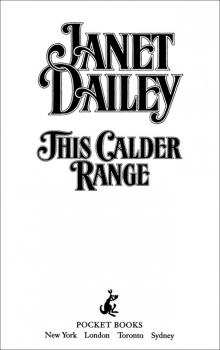 This Calder Range
This Calder Range Difficult Decision: Connecticut (The Americana Series Book 7)
Difficult Decision: Connecticut (The Americana Series Book 7) Honor
Honor Touch the Wind
Touch the Wind Enemy in Camp
Enemy in Camp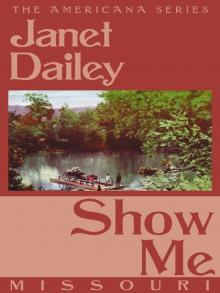 Show Me
Show Me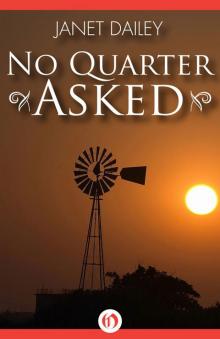 No Quarter Asked
No Quarter Asked The Second Time
The Second Time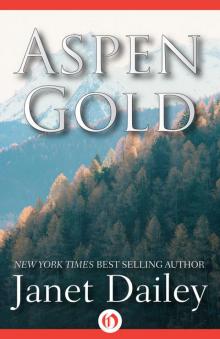 Aspen Gold
Aspen Gold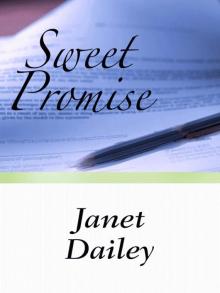 Sweet Promise
Sweet Promise Triumph
Triumph Savage Land
Savage Land Fire and Ice (The Americana Series Book 5)
Fire and Ice (The Americana Series Book 5) Western Man
Western Man The Traveling Kind
The Traveling Kind The Hostage Bride
The Hostage Bride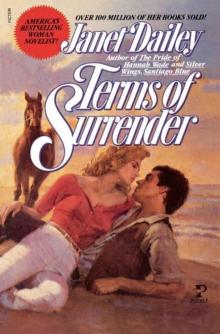 Terms of Surrender
Terms of Surrender Tidewater Lover
Tidewater Lover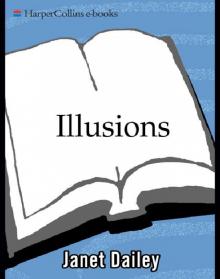 Illusions
Illusions Texas Free
Texas Free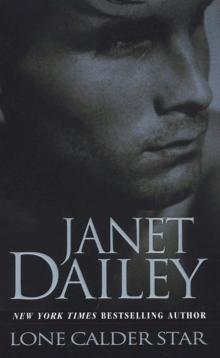 Lone Calder Star (Calder Saga Book 9)
Lone Calder Star (Calder Saga Book 9)